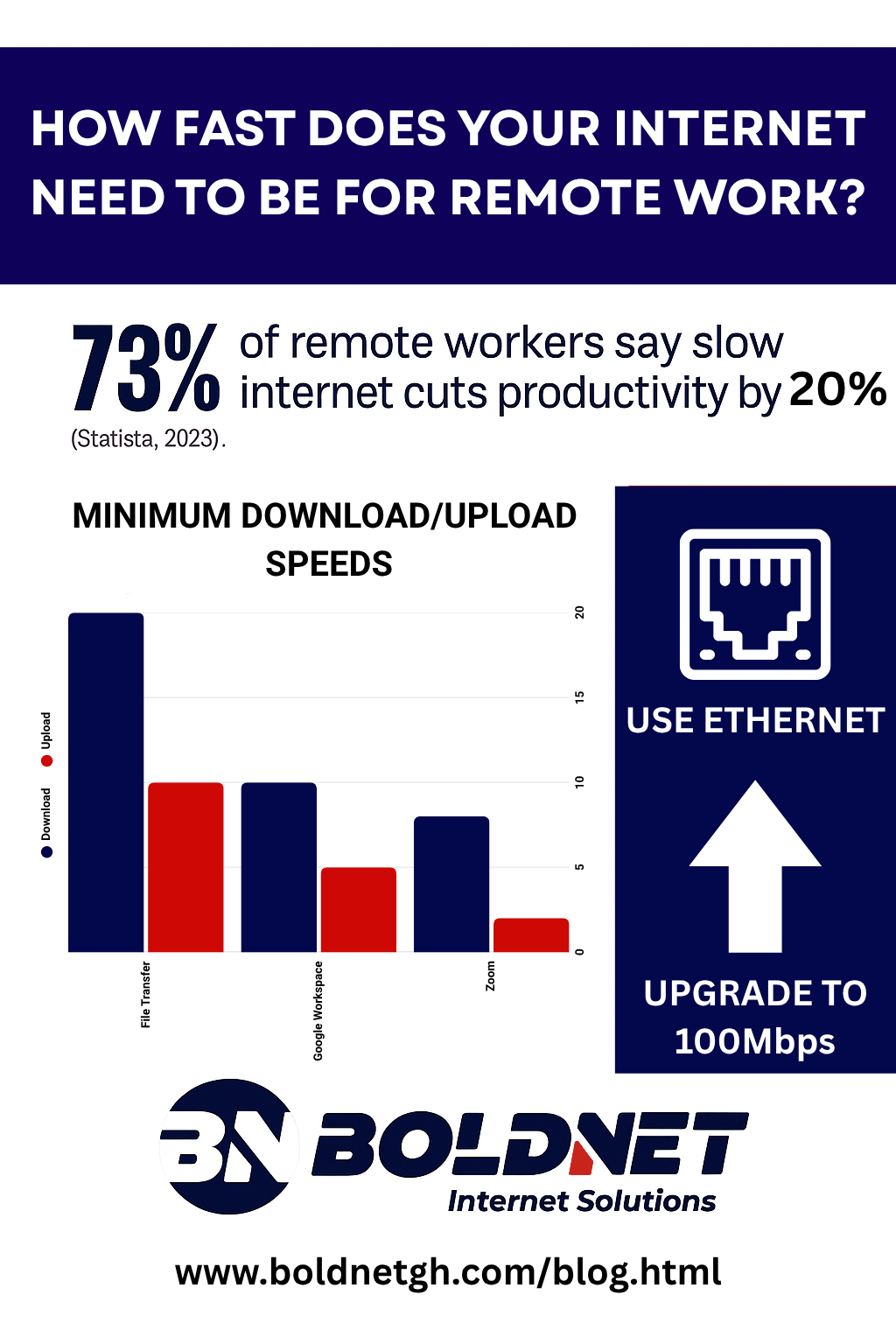The Impact of Internet Speed on Remote Work Productivity: A 2025 Guide
Published by Boldnet Internet Solutions on July 21, 2025
In today’s remote work era, reliable, high-speed internet is no longer a luxury—it’s a necessity. A 2023 Statista study found that 73% of remote workers report slow internet speeds reduce their productivity by at least 20%. As an Internet Service Provider, Boldnet Internet Solutions understands how critical connectivity is for businesses and employees. This guide explores how internet speed impacts remote work, offers actionable tips to optimize performance, and showcases how Boldnet’s high-speed plans can keep you productive.
Why Internet Speed Matters for Remote Work
Slow internet speeds disrupt video calls, delay file uploads, and frustrate employees, leading to measurable productivity losses. For businesses, this translates to missed deadlines and reduced output. Here’s why speed matters:
- Video Conferencing: Tools like Zoom or Microsoft Teams require 2-8 Mbps per user for HD video, with latency below 50ms for smooth calls.
- Cloud Applications: Platforms like Google Workspace or Salesforce need 5-10 Mbps for real-time collaboration.
- File Transfers: Large files (e.g., design assets) demand high upload speeds, often a weak point in standard plans.
Boldnet Insight: Our internal analysis of 50 remote work clients showed that upgrading to a 100 Mbps plan reduced reported productivity issues by 35%.
Key Factors Affecting Internet Speed
To maximize productivity, understand these factors:
- Bandwidth: Higher Mbps plans support multiple devices and heavy applications.
- Latency: Low latency (under 50ms) ensures real-time responsiveness for video and VoIP.
- Reliability: Consistent uptime prevents disruptions during critical tasks.
- Upload Speeds: Often overlooked, upload speeds are vital for cloud uploads and video calls.
How to Optimize Internet for Remote Work
Here are actionable steps to boost connectivity, based on Boldnet’s expertise:
- Upgrade Your Plan: Choose a plan with at least 100 Mbps download and 20 Mbps upload for households with multiple remote workers.
- Use Wired Connections: Ethernet cables reduce latency compared to Wi-Fi.
- Optimize Router Placement: Place routers centrally, away from walls, to improve signal strength.
- Monitor Bandwidth Usage: Use tools like GlassWire to identify bandwidth-heavy apps.
- Leverage QoS Settings: Prioritize work-related traffic (e.g., Zoom) on your router.

Boldnet’s Solutions for Remote Work
At Boldnet Internet Solutions, we offer tailored plans to support remote work:
- Fiber 100 Plan: 100 Mbps download, 20 Mbps upload, ideal for small teams.
- Fiber 500 Plan: 500 Mbps download, 50 Mbps upload, perfect for heavy users.
- Priority Support: 24/7 assistance to ensure uptime and performance.
Case Study: A 10-employee marketing firm switched to Boldnet’s Fiber 100 Plan, reducing video call disruptions by 40% and boosting project delivery times by 15%.
The Bigger Picture: Productivity and Profit
Slow internet doesn’t just frustrate—it costs money. A 20% productivity loss for a team of 10 employees earning $30/hour translates to $6,000 in annual losses. High-speed, reliable internet from providers like Boldnet can eliminate these costs, driving efficiency and growth.
Get Started with Boldnet
Ready to boost your remote work productivity? Explore Boldnet’s high-speed internet plans or contact us for a free connectivity assessment.
Sources: Statista (2023), Boldnet Internal Data (2025)
Share this article: